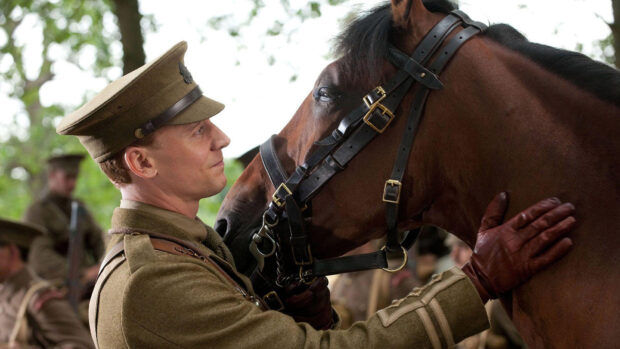They say time is the great healer and yet 100 years after the outbreak of World War I, the statistics of suffering still move us today as much as they did the generations directly involved.
To read, or write, about that terrible war — the nine million people who died; the appalling number of equine deaths, and the devastating mental and physical damage incurred — causes an almost physical sense of pain. But this is a tiny echo of what happened to those humans and animals involved.
For H&H readers, the plight of the horses and mules is probably as hard to think of as the human horror, and we shouldn’t be ashamed of this. Even then it was recognised.
At the time, Signaller Jim Crow of the 110th Brigade, Royal Field Artillery, expressed it well: “We knew what we were there for; them poor devils didn’t, did they?”
Here are 6 ideas of ways to commemorate the experiences of WWI horses this summer:
1. Visit the ‘Warhorse to Horsepower’ exhibition at The Tank Museum, Bovington, Dorset, which runs until the end of the year. The display examines the role of horses before, during and after World War I. The key emphasis is on the British Army’s transition from horsed Cavalry to armoured vehicles — and the reasons behind this major shift in warfare. Visit: www.tankmuseum.org
2. ‘From Cavalry Chargers to Beasts of Burden’ — a talk by Dr Karen Jones — will take place at the REME Museum of Technology, Aborfield, Berks, on 13 August. It will explore the myth and reality surrounding horses in war by taking a look at their changing use in the British army from the Crimean War until the last cavalry charge of the First World War on 11 November, 1918. Visit: www.rememuseum.org.uk
3. The REME Museum of Technology is also hosting a family friendly ‘World War I commemoration day’ on 4 August. Visitors will be able to view the exhibition ‘Horse Drawn War’, take a look at the World War I stables, meet two ex-military horses from The Horse Trust and take a look around a World War I horse ambulance. Visit: www.rememuseum.org.uk
4. Skinner’s Horse, an authentic World War I cavalry regiment re-enactment unit, is holding displays at various venues over the summer. For details visit www.skinnershorse.co.uk
5. Donate money to an equine charity that helps look after working horses. The Brooke, for example, was founded by Dorothy Brooke in 1934 to care for World War I veteran horses sold to Egypt. It is now an international animal welfare organisation for working horses, donkeys and mules. Visit www.thebrooke.org
6. Get tickets for the stage spectacle ‘War Horse’. Based on the novel by Michael Morpurgo, South Africa’s Handspring Puppet Company brings the full-scale horses to life on the stage, to create a play that you won’t forget. Just remember to pack your hankie… Visit: www.warhorseonstage.com
For more details about local and national events being run this summer to commemorate World War I, check out www.firstworldwarcentenary.co.uk, www.greatwar.co.uk, www.centenarynews.com and www.1914.org
Read the full feature about World War I horses in this week’s issue of Horse & Hound magazine (31 July 2014)



